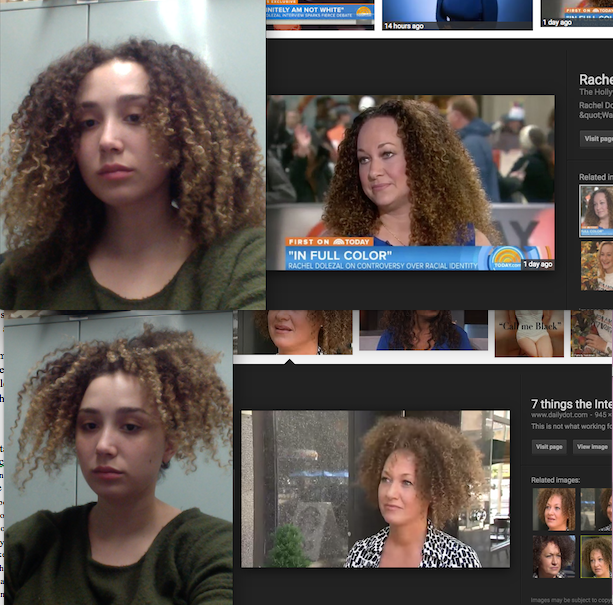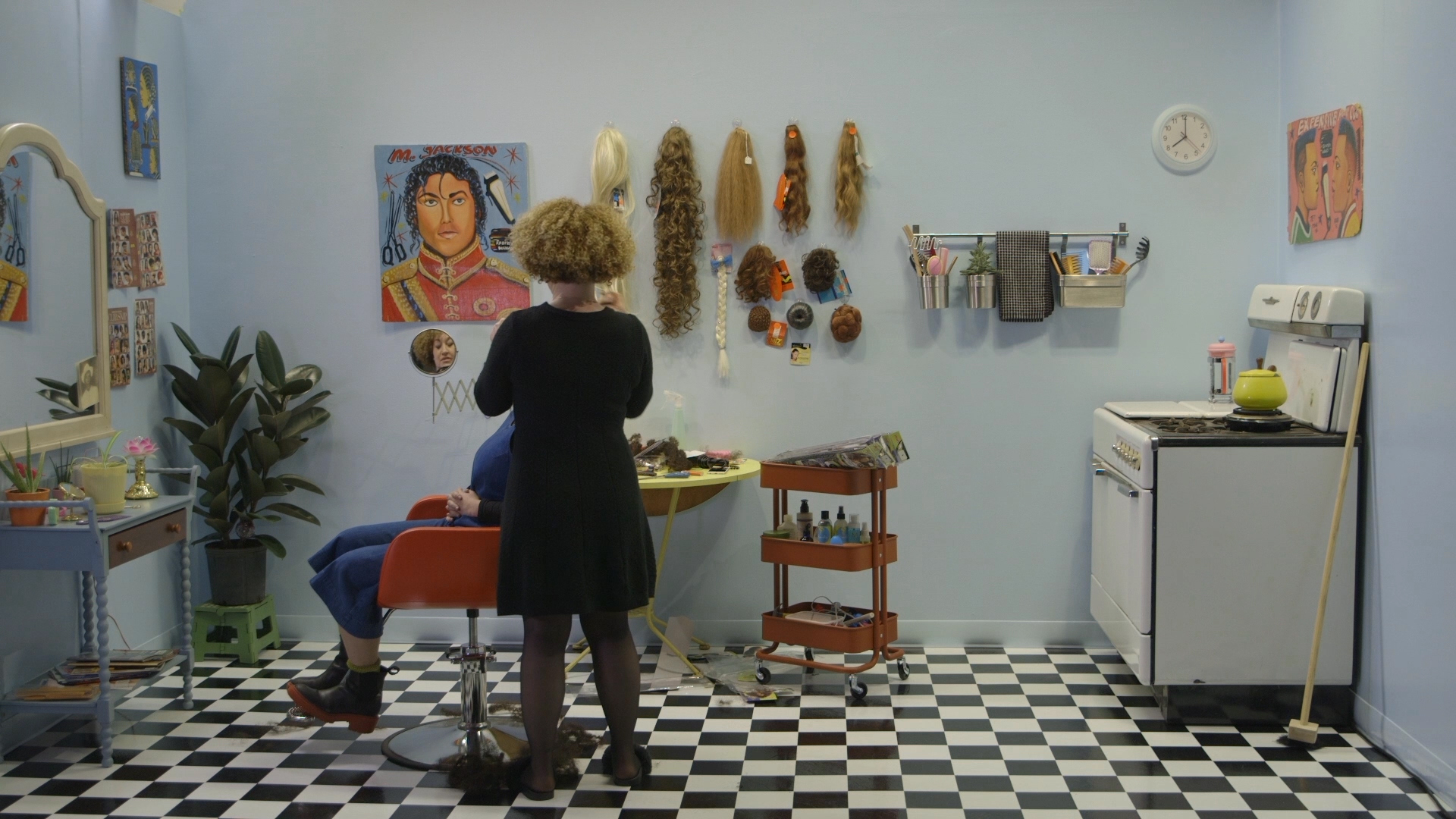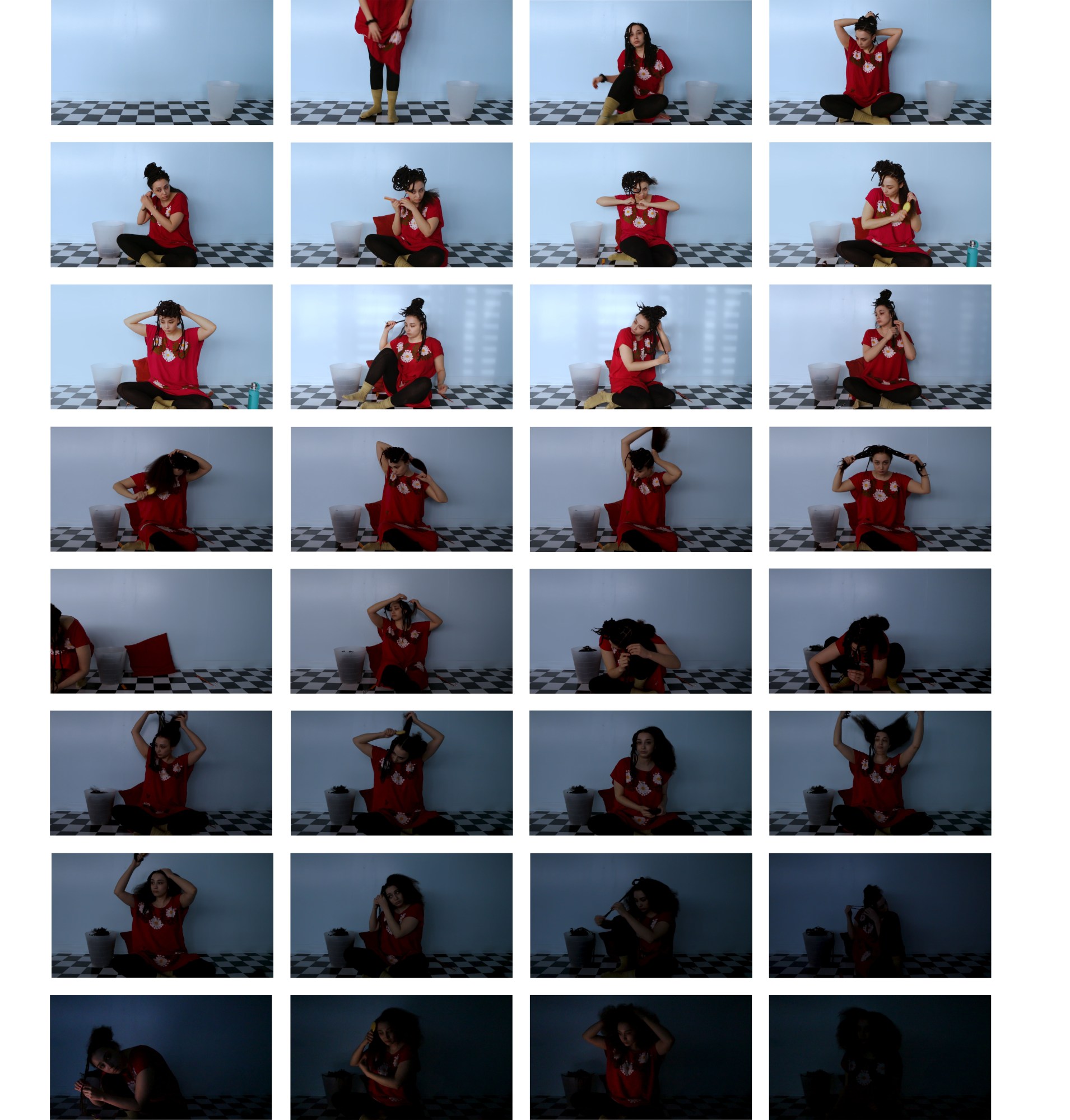Hair is art. Experimental, bodacious beauticians like the ones who take part in Detroit’s storied Hair Wars competition and the sculptural braids of Solange-collaborator Shani Crowe have powerfully proven this. But never did we think hair could literally be transferred over to the canvas, employed in the same way as yarn.
Sula Bermudez-Silverman, a recent Yale MFA graduate, first began her interdisciplinary exploration of hair politics by using strands of her own hair for embroidery. The process was tedious, she describes, requiring her to flat-iron the strands of hair she used and always pay close attention to their fragility. The end result was worth it however, resulting in spellbinding works that simultaneously capture the magic of Sula’s hair and people of color’s everywhere. Her embroidery design of a man with cornrows, his back turned towards us, adds an intriguing softness to a hair style that has frequently been associated with “thugness.”
Then came Rachel Dolezal. Sula found herself intrigued by how she and the infamous public figure shared a similar likeness. Sula began creating collages out of photos of Rachel and herself, pairing together a genuine person of color with someone who so desperately wants to pass as one. “The reason I was so intrigued by her was that all she did was change her hair in order to become “black.” That is kind of the same line I straddle on,” Sula shares, touching on her mixed heritage. The scale can be tipped one way or another depending on how someone views me, and it’s mostly my hair that does that.” Sula found a new understanding to the work she was creating around Rachel when her sister told her this: “‘It’s not that you look like her, it’s that she looks like you,'” Sula recollects. “That was a crazy shift to me, because she is performing as someone like me.”
Sula then took her interest in Rachel to the ultimate level. She reached out to Rachel and asked the heavily memed star to take part in her Yale MFA thesis project. Rachel agreed almost instantly. The conceptual video sees Rachel, who works as a hairstylist, braiding Sula’s hair with a surprising expertise. The experience felt deeply personal, Sula shares. As she sat in the chair for over seven hours, chatting with Rachel, Sula found herself leaving more conflicted about how she felt about Rachel.
Here, Sula talks to i-D about using her hair for everything from embroidery to spinning wheels.

What inspired you to start collecting your hair?
It started when I was making the embroideries around 2012-2013. I was originally collecting my hair in order to make these embroidered hair doilies. When I would brush or comb my hair, strands would stick to the comb. Rather than throw them out, I decided to keep all my discarded hair in a shoebox, this went on for six or seven years before I even knew what I was going to use it for.

Is doing embroidery with your hair much different from using regular thread?
Definitely. Obviously the hair is only the length that comes out of my head. So I’m constantly having to get a new piece. Unfortunately, it also breaks very easily. I would straighten each piece of hair, because if I didn’t it was basically impossible to embroider with. I used a flat-iron, making it an arduous process that takes much longer than it would if I used regular thread.

Is there any other works by black artists that deal with poc hair that inspires you?
I was looking at Kerry James Marshall when I built the set for the hair salon/kitchen featured in my video. Specifically his piece School of Beauty, School of Culture . The painting is set in a black hair salon and there’s this strange skewed head of Disney’s Sleeping Beauty. The only person in the scene that sees the head is this little kid, who’s trying to inspect it. Adrian Piper would be another inspiration: a lot of her work deals with passing. Her piece My Calling Card #1 is one of my favorite works ever. Other than those I mentioned, I would say Lorna Simpson and Ellen Gallagher, their work deals specifically with black hair.

You have exhibited the possibilities of poc hair in other ways too, spooling your own hair. What was that process like?
What I use is a drop spindle, which is literally a stick with a hook at the top. Spinning hair is a long process. Just like you would with wool or cotton, you begin by brushing with hand carders and create a roll of fiber called a rolag. Then you spin it with the drop spindle by kind of holding it in the hair and letting the stick spin around. That spinning and winding process creates yarn by twisting the fibers together.

How did Rachel become involved with your MFA thesis project?
I was initially curious about Rachel because of the media frenzy that surrounded her. I wanted to explore why the public outrage was so extreme and why it seemed to last so long. I went to her Facebook page and saw “typically responds within in an hour.” I thought, ‘I can just send her a message and see what happens.’ She responded and said, “I would love to help you, I love helping students.” My approach to asking her to work with me was to make sure that she knew that I was not trying to demonize her or make her into any sort of meme again. I wanted to understand where she was coming from and why she identifies the way she does. I built the set and flew her to New Haven for one day. It was nine to ten hours of her doing my hair and talking.

What was the reaction to your thesis project like, especially from other people of color?
I was very hesitant and nervous about the way the piece would be received, but the response to the project was very positive. Rachel is such a polarizing figure, many people jump to quick conclusions from what they know about her through the media. I worried that by giving her a platform or space, I would be condemned for promoting her. I had to find a way to negotiate empathy towards her while also being critical and challenging of what she stands for. I had to constantly weigh my emotions against my intellect when considering her role in my piece. My project was less concerned with her as a person and more about the cultural wound that she represents for so many people of color. Her notoriety reveals the depth and intensity of the pain and frustration people, namely Black people, feel about race and appropriation in the United States. In my final work, I was able to integrate the videos into the piece in such a way that they are only a small facet of what I was ultimately exploring.
Did the whole experience feel awkward?
I think getting your hair done is always awkward. I was ready for that, I wanted to embrace the awkwardness. It can be such charged contact (usually between mothers and daughters); you are literally giving someone your head. I had a huge mirror and I wanted to be able to see her when she was talking and her to see me. In terms of my personal relationship with her, it was not awkward at all. The level of comfort between us was a pleasant surprise. She was easy to get along with; she’s charming and sociable. That actually kind of freaked me out when I was thinking about it after the fact, it was very confusing. It’s like meeting a celebrity — you know so much about their public lives, and then when they’re in front of you they’re actually a real person. Not somebody you can poke fun at and make memes about.

